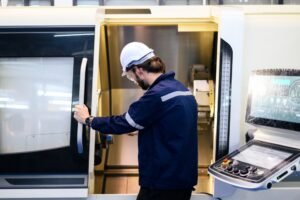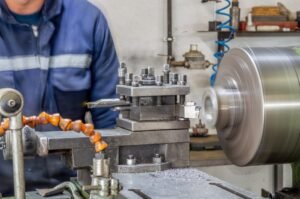Importance of CNC machine tools
CNC machine tools play a key role in modern manufacturing. They are controlled by computers to achieve high-precision and high-efficiency processing operations. Choosing the right CNC machine tool can not only improve production efficiency, but also improve product quality and reduce production costs. Therefore, understanding how to choose a CNC machine tool that suits your needs is an important issue that every manufacturing company must face.
Understand production requirements
The first step in choosing a CNC machine tool is to clarify your own production needs. This includes an in-depth analysis of product type, processing material, production scale and precision requirements.
Product type: Different types of products have different requirements for machine tools. Simple two-dimensional cutting may only require a three-axis machine tool, while complex three-dimensional surface processing may require a five-axis or even more axis linkage machine tool.
Processing material: The processing material directly affects the choice of machine tool. For example, processing steel requires a higher rigidity machine tool, while processing aluminum or plastic may require a high-speed spindle to improve efficiency.
Production scale: Large-scale production usually requires high-speed and efficient machine tools to reduce unit costs, while small-batch and multi-variety production requires more flexibility and fast tool change capabilities.
Precision requirements: High-precision products require higher repeatability and processing stability of machine tools, and need to select equipment with higher precision levels.

Technical parameters of CNC machine tools
After clarifying the production needs, the next step is to evaluate the technical parameters of the CNC machine tool to ensure that it can meet the specific processing requirements.
Number of axes: The number of axes determines the processing capacity of the machine tool. Three-axis machines are suitable for flat processing, and four-axis, five-axis or even more axes can achieve multi-angle processing of complex surfaces.
Spindle speed and power: Spindle speed affects cutting speed and surface finish. High speed is suitable for light cutting and fine processing; spindle power determines cutting capacity. High power is suitable for heavy cutting and rough processing.
Table size: Make sure the table size is large enough to accommodate the largest workpiece, while considering fixture and tool space.
Repeat positioning accuracy: This is an important indicator to ensure processing consistency, especially in mass production. High repeat positioning accuracy means that the same position accuracy can be achieved every time the processing is performed.
Consider the brand and after-sales service of CNC machine tools
Brand and after-sales service are factors that cannot be ignored when choosing CNC machine tools.
- Brand reputation: Well-known brands usually mean higher reliability, better technical support and longer service life. Brand reputation is often closely related to product quality, innovation ability and customer service.
- After-sales service: Quick response and professional support can reduce downtime and improve equipment utilization. Good after-sales service includes regular maintenance, troubleshooting, spare parts supply, and operation training.
Cost budget of CNC machine tools
Cost is an important factor that must be considered when choosing a CNC machine tool. Companies need to choose the best performance equipment within their budget.
Purchase cost: High-end machine tools are more expensive, but they usually have better performance and longer service life. Within the budget, give priority to equipment with better performance.
Operating cost: Includes daily operating expenses such as power consumption, tool consumption, and coolant costs. These costs affect the long-term cost of use, so they need to be considered comprehensively.
Maintenance cost: Regular maintenance can extend the life of the equipment, but related costs must also be considered. Maintenance costs include spare parts, replacement parts, and service fees for professional technicians.
Environmental and safety requirements
Ensure that the selected machine tool meets environmental and safety standards to ensure operator safety and meet environmental regulations.
Noise and vibration control: Select low-noise, low-vibration equipment to improve the working environment and increase employee satisfaction.
Safety protection measures: For example, protective doors, emergency stop buttons, safety gratings, etc., to ensure safe operation. These measures not only protect operators but also prevent equipment damage.
Choosing the right CNC machine tool requires comprehensive consideration of many factors, including production needs, technical parameters, brand reputation, cost budget, and environmental safety. Through reasonable decision-making, production efficiency can be improved, operating costs can be reduced, and the competitiveness of enterprises in the market can be enhanced. Enterprises should conduct a comprehensive analysis based on their actual situation and make the best choice to achieve the best return on investment.




